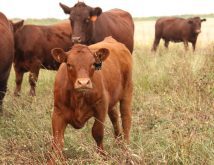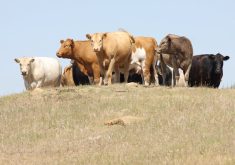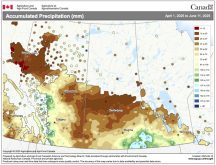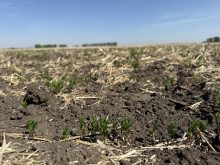Harvest has begun in Western Canada and along with it speculation about the size of this year’s crop, particularly in Western Canada.
Last week, Farmers Business Network Inc. (FBN), offered an inkling of farmer insight on what this year’s crop might look like in Western Canada with a survey. They asked growers in Canada’s three Prairie provinces to rate the yield potential of this year’s spring wheat crop.
More than 500 growers in Alberta, Saskatchewan and Manitoba were asked to rate this year’s crop on a scale from one to 10, with one representing the worst crop a grower had ever produced, five representing average, and 10 indicating the their best wheat crop ever.
In Alberta, 22 percent of respondents rated this year’s wheat as average or close to average, 66 percent tagged it as below average (a rating of four or less) and 13 percent gave it an above average grade (six or higher).
Manitoba respondents rated 49 percent of their wheat crop as average, with 36 percent falling below average and 14 percent marking it as above average.
In Saskatchewan, 23 percent of those surveyed rated their wheat crop as average, 67 percent rated it below average and 10 percent rated it above average.
Kevin McNew, chief economist at FBN, said survey respondents were split fairly evenly between the three Prairie provinces. They were spread throughout most production regions within each province.
“We got over 500 responses from farmers across the three key provinces … and what we found was kind of what we expected,” McNew said.
“Saskatchewan was certainly the worst of the three Prairie provinces in terms of crop ratings…. On average farmers there rated wheat at about 3.5 … so certainly quite a bit below normal.
“Alberta was a little bit better at about 3.8 on average and Manitoba was kind of close to average, just a little bit below five, so Manitoba seems to be at least within a shot of normal.”
FBN is conducting a similar growers’ poll on the size of this year’s canola crop in Western Canada.
As harvest begins in earnest, speculation about the size of this year’s prairie crop continues to grow.
According to some industry analysts, Canadian farmers collectively are set to harvest one of their smallest crops in recent memory.
Production over a large portion of the Canadian Prairies is expected to be well below normal, fueling predictions of a total Canada-wide harvest for wheat, durum, barley, oats, flax, rye, canola, peas and lentils at well below 70 million tonnes.
In mid-July, Agriculture and Agri-Food Canada (AAFC) projected all-Canadian production for those crops at 73.8 million tonnes.
That’s about five percent lower than last year’s 77.7 million tonne crop, according to AAFC estimates, but almost on par with the previous three-year average of 74.2 mmt.
Others in the industry are not so optimistic.
Agriculture Canada is scheduled to release its next crop production estimates at the end of August.
It is widely expected that those estimates will present a more accurate picture of how badly Canadian crop production has been hampered by drought and excessive heat, particularly in the southern prairies.
South of the border, McNew said American producers and market analysts were also expecting a downward adjustment in USDA’s latest production estimates for spring wheat, which were due out late last week (Aug. 12).
McNew, who is based in Montana, said spring wheat production estimates in that state are likely to see a substantial downward adjustment, as growers there cope with conditions that are as bad as or worse than conditions in 1988, a benchmark year for drought-related crop losses.
As of early last week, USDA’s production estimates were still significantly higher than confirmed production data from 1988.
“In the United States, our spring wheat numbers continue to come down, which is supportive to the overall spring wheat market,” McNew said.
“And in Canada, I think there’s enough problems in key production areas to lead to some pretty big adjustments there as well.”
Mark Hemmes, president of Quorum Corporation, agreed that this year’s crop will be smaller than normal.
“I think that’s safe to say,” Hemmes remarked.
“But there’s still a lot of harvest to do and we might be surprised yet,” he added.
Hemmes said he’s heard some prognosticators suggesting a total harvest in the range of 60 million tonnes or less.
Early yields from harvested fields in southern Alberta “are not good,” he added.
“But I think it’s too early to put a number on it yet,” Hemmes said.
“Right now, there’s a lot of people predicting gloom and doom, but I don’t see that value in that until things are said and done.”
For more content related to drought management visit The Dry Times, where you can find a collection of stories from our family of publications as well as links to external resources to support your decisions through these difficult times.



















